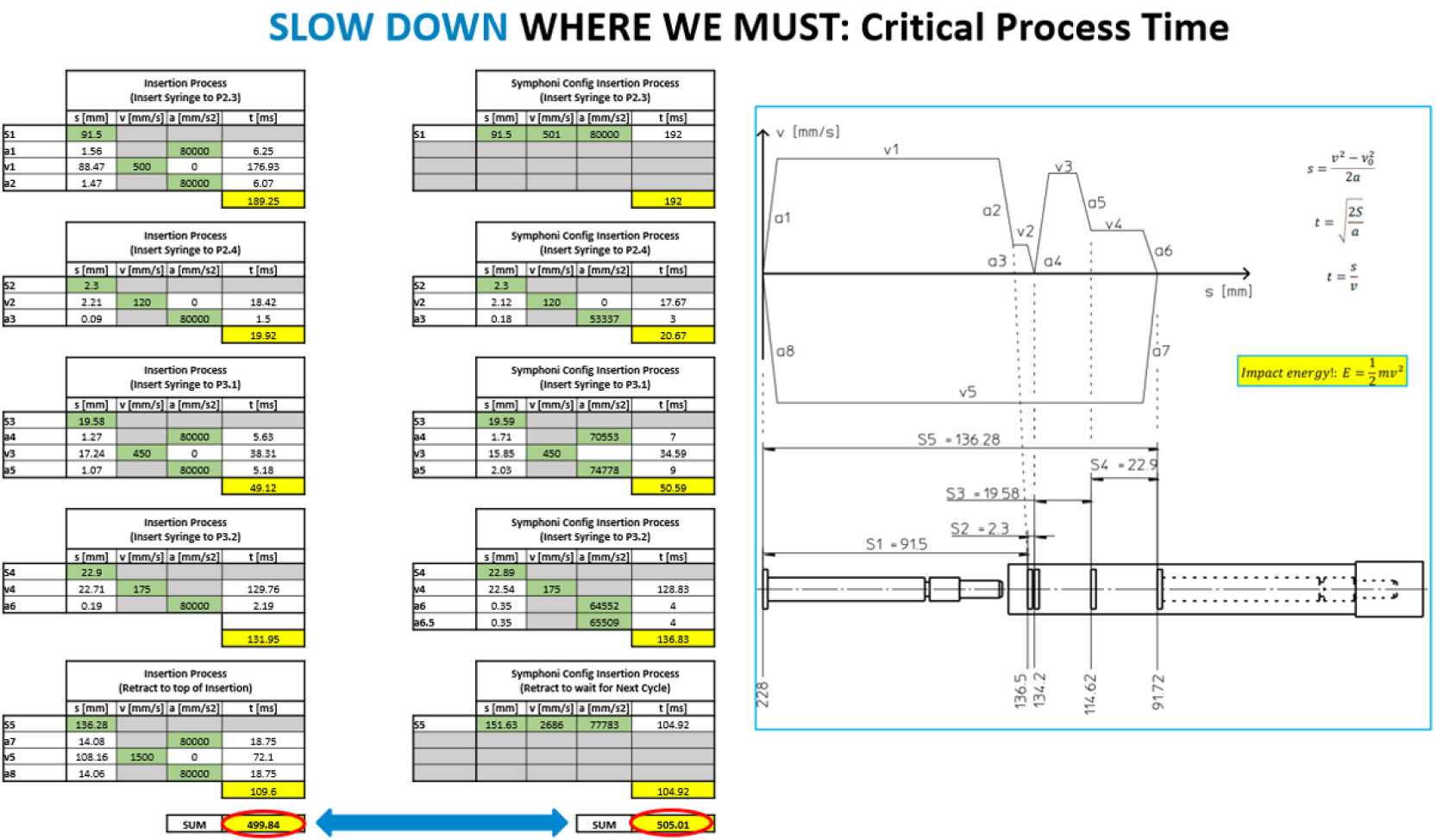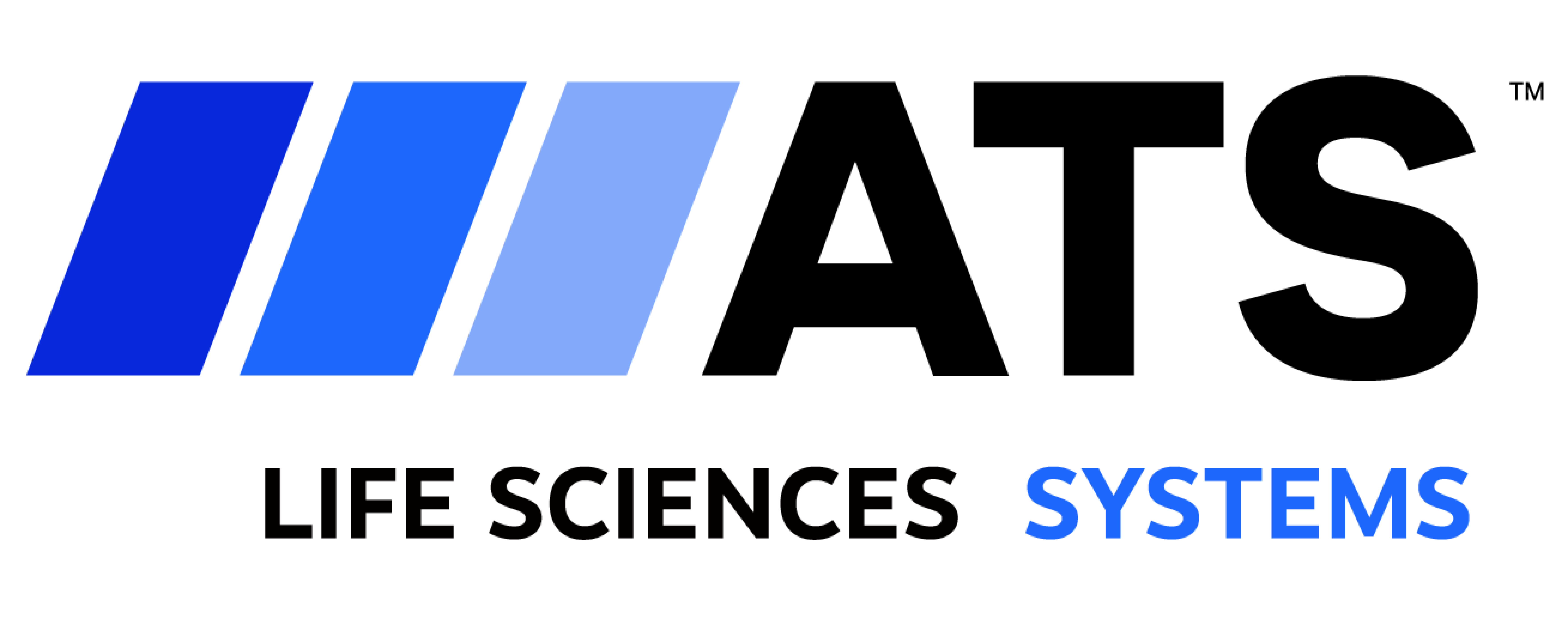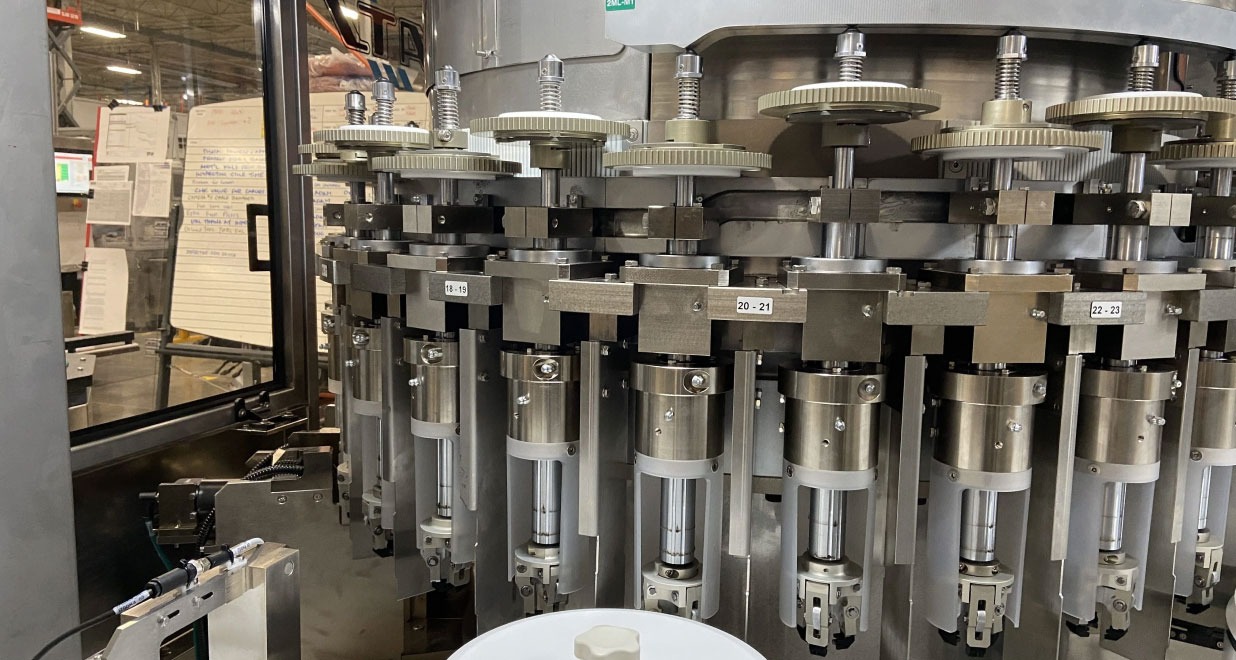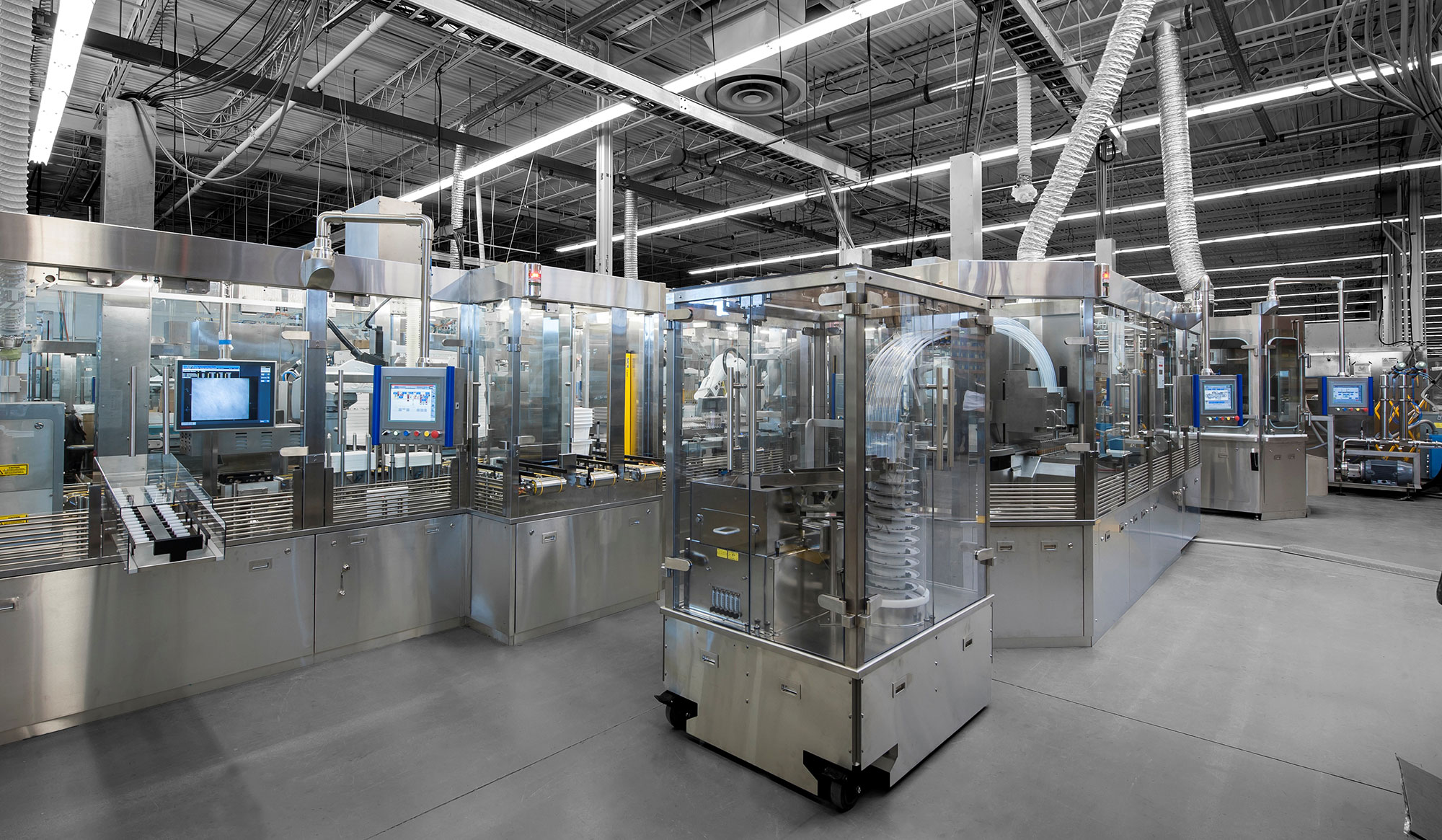Assembly Case Study
Same Speed, 90% Less Tooling and TWO Different Autoinjectors on One Machine
A common assumption about assembly technology is that for it to go fast, core processes must be altered, sped up, or be rendered with more force. This was exactly what a multinational pharmaceutical firm believed when they were looking for an innovative high-speed assembly solution for their new autoinjector lines.
“SAME SPEED. 90% Less tooling. zero compromise.”
A client approached ATS to see if there was a better way to assemble autoinjectors faster and more efficiently. They wanted speed, flexibility, and performance all wrapped into one. They wanted their core processes to be respected. An they wanted to run two different autoinjectors on the same machine.
CUSTOMER REQUIREMENTS
Our client was a medical device manufacturer that already had high volume assembly lines operating at 320 PPM for their autoinjector products. Their conventional, custom-built machines were very large, with 20 tools. Each assembly line also had pre- and post-quality inspection stations. Each quality station had 10 additional tools per station for a total of 40 tools on 3 stations.
The manufacturer was searching for an alternative to their current single purpose engineered-to-order assembly line.
Their challenge was to reduce machine footprints while keeping the core process running at 320 PPM. Additionally, was there a flexible technology that could produce two different products on the same assembly line?
When we proposed that the digital assembly platform called SymphoniTM could reduce the current assembly machine from 20 to 4 tooling for the insertion process and eliminate two quality control stations by doing the quality inspection using the same 4 assembly tools, the client thought we were missing something. They were concerned that we would apply too much force on the product, or alter the core process, or not be able to monitor every critical stage of the assembly process. Our engineers designed touch tooling and mapped out the sequence of operations on a Symphoni off-line simulation tool called Dynamic™. The tooling and operational sequence were then integrated into a module on a Symphoni demo machine.
The client was invited to the ATS Innovation Center to run the proof of principle.
With 4-UP tools in one station versus 40-UP tools on three stations on their current assembly line, Symphoni achieved the same insertion rate of 320 PPM while doing the pre- and post-inspection. Not only did Symphoni meet all the client’s objectives, but the client was also pleasantly surprised by the precision and gentleness of the insertion process when they watched the high-speed video. Overall, Symphoni reduced floor space by over 50% and eliminated 90% of tooling.
In other words, we demonstrated that our standardized, modular, pre-engineered, pre-verified, digital assembly platform is unmatched in performance, quality, footprint, and flexibility compared to conventional assembly equipment.
Overall, the Symphoni system achieved the following:

Client Demo In Action
(320 PPM, 1 OF 4 Tooling at 750 ms)
The high-speed camera captures the insertion that is otherwise difficult to see when the machine operates at 320 PPM. As you can see in the grey video, Symphoni performed the same core work at the same speeds and force as the existing equipment, while being gentle on the components.
Reviewed another way, the Waveform Signature Analysis shows 50 runs on the demo unit, demonstrating that Symphoni does the same work at the same rate, respecting critical processes, but using fewer tools.

From the data overlaid, it is evident that there is minimal variation from one run to the next. We could clearly identify and monitor each of the interactions that the pre-filled syringes have with the injector body.
Furthermore, the next four (4) images capture and clearly identify the failure mode waveforms:

GENTLE FOR CRITICAL PROCESSES AND PART HANDLING
The core principle of Symphoni is efficiency. We do not change process times or procedures associated with any critical operation. The demo showcases and highlights Symphoni’s most important feature: efficiency. We adopt the lean methodology in our technology and use value stream mapping at the millisecond level to allow the system to go as slow as it needs for critical processes, and as fast as it can for non-value-added processes.
In this project, we monitor force and distance to identify any quality failures, just as with a conventional assembly line.

FAST FOR NON-CRITICAL PROCESSES
The client’s conventional equipment performed its critical functions at 38.5% of the total cycle time. The remainder of the total cycle time (800 milliseconds, or 61.5%) is wasted in preparation. This is where the machine is getting itself into place, preparing for critical process work, and getting everything out of the way to start the next cycle. These steps are necessary—but at more than half of the total cycle time, they make the machine inefficient.
Symphoni’s efficient methodology preserved valuable time in the non-valuable processes. While taking the same 500 milliseconds to do the critical process work, we eliminated 550 milliseconds of wasted motion, therefore changing the ratio to 67.7% of total cycle time devoted to critical motion. We call the remaining 32.3% ‘non-value-added’ processes. This flipped ratio is why Symphoni can go fast and still be gentle on parts. The synchronous motions are calm to allow the machine to take all the time it needs for the important processes like syringe insertions and ultrasonic welding.

THE RESULTS
The results of Symphoni when benchmarked against the client’s existing conventional equipment is compelling.

The value-added time of 500 milliseconds is critical and sacred—no different than the conventional solution—but the existing line had two quality check stations for a total of 3250 milliseconds of waste time compared to Symphoni’s 250 milliseconds. Between the quality check stations and 20-UP tooling for assembly, the conventional lines had 40 tools doing the same work that Symphoni can do with four (4) tools.
The outcomes were clear, powerful, and—from the client’s perspective—groundbreaking. Symphoni dramatically reduced footprint by more than 50%, reduced tooling by over 90% and increased quality without sacrificing performance.
The client’s goal to run two different autoinjectors on the same machine was achieved.
The client’s only remaining question was: ‘How does Symphoni achieve such performance at assembling autoinjectors while retaining quality and flexibility?’
The answer is multifaceted—there is no single element that allows Symphoni to do what it does. We started from first principles and devised a machine that zeroes in on precisely what is necessary while ruthlessly cutting out what is not.
Symphoni consists, in part, of the following:
- A combination of patented (“Rapid Speed Matching”) RSM Technology® that enables tight coordination of integrated, high-speed, digital, multi-axis robotics we call RMS Arms,
- Value stream mapping that removes waste,
- Compact, modular construction and digitally configurable synchronous operation,
- A decentralized, distributed control system, with each axis of motion controlled by a locally embedded copy of the Symphoni operating kernel,
- Digitally configurable, friction-free orientation of incoming par
- Highly precise motion control, with each axis digitally adjustable via the HMI in 0.01 mm increments,
- End-to-end digital awareness, with the status and position of each system device verified 200 times per second by self-diagnostics,
- The electromagnetic transport of SuperTrak CONVEYANCE™, a smart technology with individually controlled shuttles allowing increased throughput without an increased footprint, resulting in less complex and more adaptable automation systems.
Symphoni, with its high speed and high flexibility, provides the lowest total cost of ownership. It is a depreciable asset that can be retooled or reconfigured for different products and processes, thus adding flexibility to the business.
Watch Ken Nicholson, engineer and one of the inventors of Symphoni, explain Waveform Signature Analysis
Resources
BROCHURE
Your Pharma Projects, Our Proven Automation Solutions
Are you a pharma manufacturer? Learn about how we can help you with your project
BROCHURE
Your Medtech Projects, Our Proven Automation Solutions
Are you a medical device or diagnostic manufacturer?Learn about how we can help you with your project
Fact Sheet
Standard Autoinjector Manufacturing System
Pre-engineered for lower design costs and faster delivery; suitable for any common three-piece autoinjector







 Contact Us
Contact Us  Subscribe
Subscribe  LinkedIn
LinkedIn  Youtube
Youtube